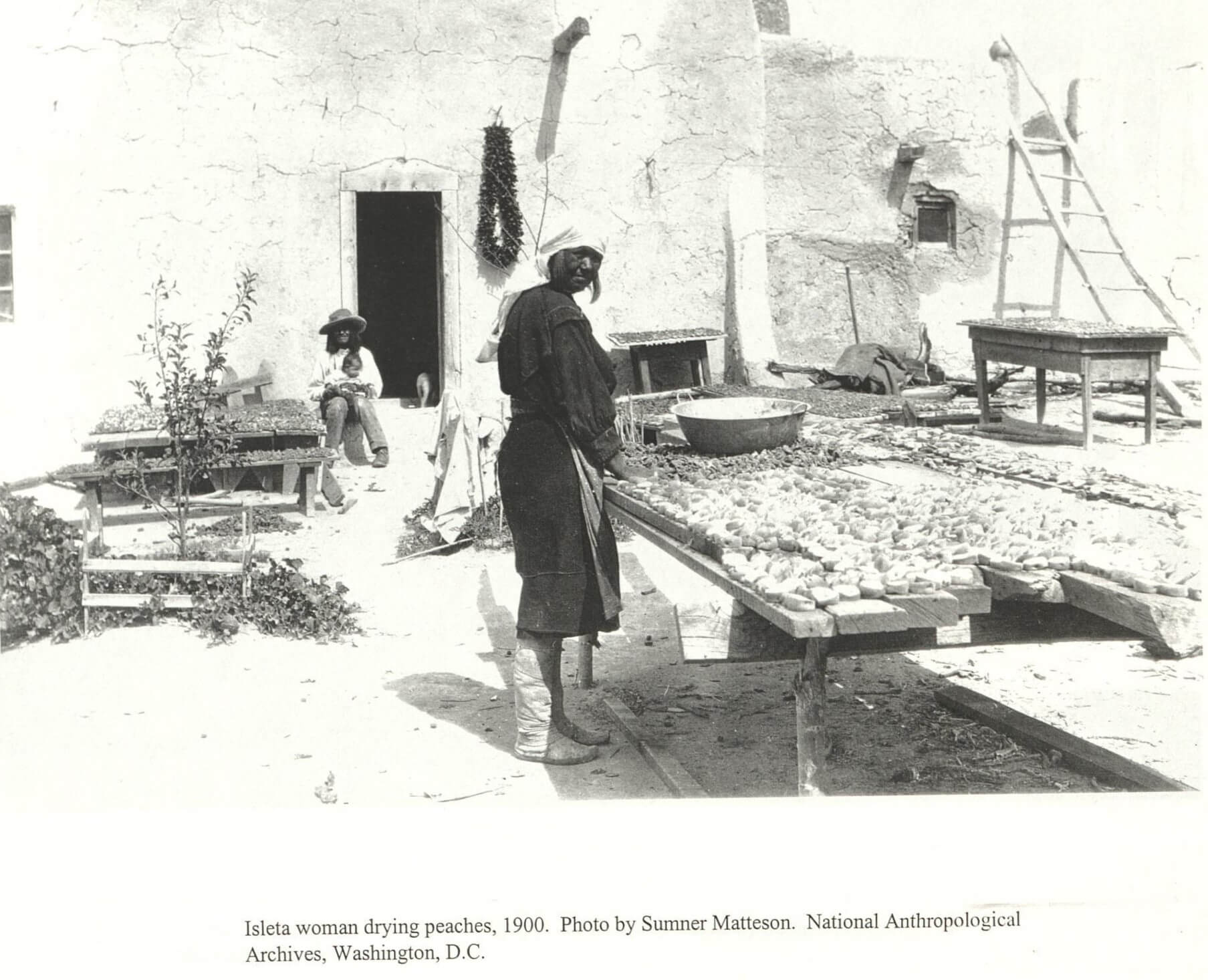More than a Meal: Resources on the Landscape

Beyond food and water, people here have long made use of an abundance of minerals, plants, and animal products to shape and enrich their lives. From digging out clay for pottery, to collecting salt, a wide variety of minerals were crucial for activities in all areas of life. Flowers and minerals yield pigment for paintings in caves, dying textiles, or decorating ceramics. Material for baskets, clothing, floor coverings, wrapping babies, and much more was harvested from plants and animals. Homes were created from things readily available on the landscape. People lived in shelters or caves, or created settlements using oak and juniper trees, sometimes on limestone rock foundations. Animal hides were also used to create homes. Partially subterranean structures were also used, from bases dug into the sands and erected with logs and brush covered by animal hides.
The diversity of resources is partly due to the geology of the area, with the mountains home to different plants and animals and limestone rock outcrops that were easily chipped and shaped for construction or cherts, basalt, and quartzite used for tool making. Seasonal changes affect when wood, seeds, flowers, and roots can be harvested. Animals move with the weather and birthing seasons, shaping hunting routines. All these factors played a pivotal role in how homes were constructed and how people made use of the landscape.
Read more below to learn about how many different resources are found here and a few of the roles they played in ancestral life.
Earth
Southeast New Mexico is rich in mineral and clay deposits. In this region, Indigenous communities commonly harvested minerals, like mica and hematite, to use in many different ways. Mica is typically harvested from igneous or sedimentary rock, and today is popularly used in making drywall and paint. Similarly, people in the past collected mica to whitewash walls and, historically, to make window panes. Ancient peoples used other minerals, like hematite, as pigment for painting pictographs, decorating pottery, and creating murals inside of their homes and sacred spaces.
This region is also rich in clay, commonly used for making pottery. Pottery was and is a staple in Indigenous life, both as a tool for cooking and as a decorated or religious vessel. Most famous in the region is that of the Mogollon peoples, who created large bowls decorated with striking images. Along with these rich clay sources, archaeologists look for other signs to teach us about material use in the past. Quarry sites, stone tool work areas, rock grid gardens, and bedrock mortars, among others, all appear in the archaeological record and show important ways that past peoples altered and use the ground around them.
When the southeast New Mexican landscape did not provide what ancestral peoples needed, they often traded or traveled to find it. Obsidian, a volcanic glass, is common throughout the greater Southwest, but was often sourced in the Jemez Mountains. Obsidian tools, like spear points and knives, found in southeast New Mexico often came from obsidian quarries further north. Chunks of obsidian stone may have been carried downstream by the Rio Grande river, to be picked up later by hunting groups in the south. Residents in the south may have also traded for these resources with their neighbors in the north. Other stone materials, like sandstone or river rocks and naturally occurring caliche, were used for building, tool making, and cooking.
Water
In the arid desert environment of New Mexico, water is a sacred and valuable resource.
Lakes, springs, rivers, have long been gathering places for humans, plants, and animals. Finding a reliable water source meant nourishment for your family, abundant plant life, and frequent animal visitors. People maintained internal maps of where water was on the landscape through stories, footpaths, and learning how to spot signs of water based on vegetation. Seasonal sources of water like arroyos and natural cisterns were also important.
This precious resource didn’t just offer hydration. In the past and today water is also sacred for its healing properties and its role in ceremonial practice. Today, many people visit natural springs like those around Truth or Consequences or in the Gila National Forest to bathe in their rich mineral waters. These springs are thought to heal ailments like arthritis. People in the past knew about these healing powers and likely used springs in southeast New Mexico in the same ways.
Southeastern New Mexico, like many places, does contain rivers (Pecos River, Delaware River, Black River), which in more eastly states, would likely be considered creeks. That does not mean that they are the only source of water. Much of the region is located on a karstic limestone foundation that allowed for, prehistorically, hundreds or thousands of springs to have been neatly scattered across the landscape. The water table would have been much higher than it is today, and these springs would have played an important role in the seasonal use of the land. The landscape is also suited to take advantage of the monsoonal weather that is a big source of water today. There are thousands of playa features all throughout southeastern New Mexico. These playas, seasonally dry, but other times, offer the perfect storage for monsoonal downpours. These features would collect water, both recharging ground water/springs, but also adding a seasonally available water source for both people and animals.
Salt
Like water, salt plays a valuable role in sustaining life in southeast New Mexico. Ancestral peoples harvested salt for their diet, but may have used it for other, more sacred, purposes as well. Zuni Salt Lake is home to Zuni’s Salt Mother deity, and many Indigenous nations harvest her salt for use in ceremonies. In the past, salt lakes were a source of life as they attracted animals who also sought the mineral in their diets, bringing them to a central place where they were easily hunted.
In southeast New Mexico, ancestral peoples may have harvested their salt at places like Laguna Plata. In the north, Zuni Salt Lake continues to be a gathering place for tribes and pueblos to harvest salt. The importance of salt for Isleta Pueblo in the south was undoubtedly established with their ancestors.
Flora
In the past and today Indigenous peoples have relied on gathering plants throughout southeast New Mexico. For ancestral nomads, not only were grains, fruits, and vegetables necessary food sources, but plants could be used in many other aspects as well. Various plants could be gathered and used in weaving baskets and sandals, as food and seasonings, as medicine, as shampoo, soap, and toothpaste, in making household items like broom handles, and for many other uses. Medicine men used plants like peyote or tobacco in rituals.
Many different plants can be found woven into ancestral life. From desert tobacco and peyote to juniper, pinon, herbs, grasses, wild onions and potatoes, the plant life in New Mexico is diverse. Today, tribes continue to use places dotted throughout southeast New Mexico as sources to gather these plants.
Fauna
Long before the presence of humans, wildlife has called Southeast New Mexico home. The animals that roamed this land likely influenced the nomadic lifestyle of the ancient peoples; as the animals moved in search of food and water, humans moved with them. From small rabbits to giant bison, humans survived by hunting and using animal meat, fat, bone, tendons, and fur or feathers to support all the aspects of their lives.
Nomadic peoples in Southeast New Mexico hunted for food, but also hunted as a ritual practice. In the past, peoples dedicated shrines to successful hunts, pecked petroglyphs that feature hunted animal figures, and even painted stories and images of animals on elaborate pots. Through this evidence we know that the act of hunting and the animals themselves played important roles in the daily and religious lives of ancient peoples.
Nomadic hunting and foraging strategies may not be used in Southeast New Mexico today, but some Indigenous communities continue to hold ritual hunts. Click here to learn about bison slaughters on the Plains.
